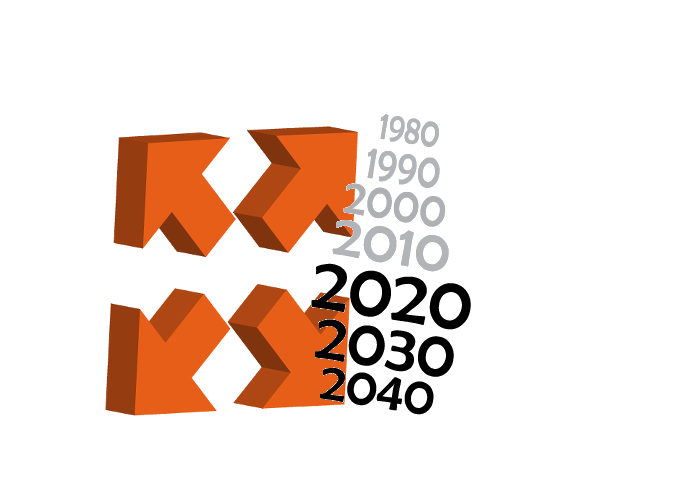Informal Across a Clear Hierarchy

The Venezuela Uncertainty Avoidance
March 11, 2015
Everybody Does the Same Thing Differently
April 9, 2015
Americans are perceived to be informal. It is very unlikely that they address anyone by their last name. It is even considered strange, distant, unnecessary and above all, not practical.
Informal = Practical
In my mind, practicality is the main driver of this phenomenon. In fact, I distinguish two important and related characteristics that define the business culture in the US: practicality and speed.
In the US, an incredible variety of last names from all across the globe can be found. By using the first name -or even a shortened version and sometimes an Americanized version- mistakes are prevented, risks of offending anybody minimalized, communication barriers are lowered and speed guaranteed.
Informal ≠ Non-hierarchical
Informal, however, should never be confused with non-hierarchical, lack of respect or liberal use of language, including profanities. While any employee will most likely address a superior by his or her first name, Americans do follow through with little dialogue or discussion. As a result, many things simply get done efficiently with efficiency being described as ‘doing things right’. The pitfall of straightforward execution is that it might not necessarily be effective, with effectiveness being described as ‘doing the right thing’.
When comparing business cultures in countries where I lived, I always found it fascinating how dress code, the formal use of language in Europe and Latin America can create the impression with Americans that the culture is formal and hierarchical, while an informal dress code and informal language used by Americans can create the impression with Europeans and Latin Americans, that Americans are informal and non-hierarchical.
While the business culture in many countries is slowly becoming more informal, the impressions generated through an informal culture can be misleading. To me it still looks like the Dutch dress more formal than Americans, they use more formal language, yet are less hierarchical than Americans. The Mexicans are also more formally dressed than both Americans and the Dutch, use more formal language than Americans, but are more hierarchical than many cultures I have experienced. Americans, in comparison, are informally dressed, use informal language, but are quite hierarchical in comparison.
The Informal Language Trap
A trap that foreigners can get caught into is the possibility of being misguided by American informality, including the American stereotype of using ‘movie English’ vocabulary. The fact that an American business partner or customer comes across as informal, does not at all mean that the conversation is open to sensitive topics or that profanities can be used freely. Using swear words is a common mistake by some foreigners visiting the USA.
In The Netherlands, my home country, the Dutch have adopted many words from other languages. When I lived in Minneapolis for a few years, I thought it would be a good idea to teach Americans ‘back’ what was adopted by the Dutch from the American English language. I was actually officially teaching Dutch during lunch breaks as part of the language club. I was a great initiative that would take advantage of all the language skills available in the office building by teaching each other during lunch breaks. Teaching swear words in itself is not really my thing, but until today I still believe that teaching profanities ‘back’ is useful to avoid a potential American disapproval that in essence was a harmless and unintended twist in the use of language. It is merely an attempt to create understanding on how difficult it can be for foreigners to sense the ‘real’ meaning of an adopted word.
The Hierarchy Trap
Another trap that people of other nationalities can fall into in The United States is the assumption that an informal relationship between an employee and a superior translates into a relaxed hierarchy and therefore could imply non-hierarchal decision-making. Essentially, this could create the impression that one is dealing with decision makers based on empowerment. Possibly many will disagree with me, but based on my observations many decisions, sometimes even minor decisions, go up very high in American organizations.
While speed is of great essence in the US, decisions can sometimes take more time than other nationalities expect. North Europeans, for example, may very well analyze and debate a specific subject for quite a while, which makes Americans think they are ‘slow and bureaucratic’ and many times results in American frustration. However, the same people may actually take a decision shortly after the perceived long debate at their level without escalation to higher levels.
In contrast, Americans seem to go through the analysis fairly quickly -possibly without much debate-, but then push the decision up the chain through various levels before a decision is final. This leads with (North) Europeans to the observation that Americans have a very hierarchical and military styled decision model. Many times this model also leads to European frustration that they wasted time with their non-empowered American peers.
The Journey Matters
Eventually, in terms of total time needed to take a decision, the two above described examples may very well end up at the same point in time. Once again, it is about the way to get somewhere as opposed to the destination itself. Appreciation and understanding of the journey that others take, makes the encounter at the same destination more likely.




